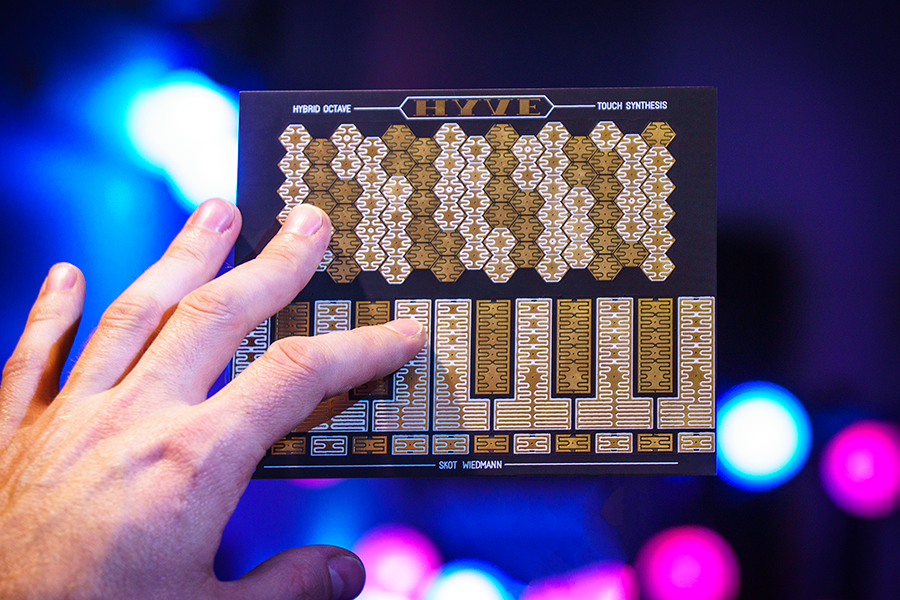For the last few years, Skot Wiedmann at the University of Illinois has been teaching electronics and music to students using a build-it-yourself mini touch synth called the Hyve. Now he's taken the 60 voice analog polysynth to Kickstarter to get it into the hands of more music makers, with backers offered fully-assembled, naked and board-only versions to get their creative juices flowing.
The Hyve's main playing area is roughly divided into two main areas. All of the notes on the instrument have been arranged to make music making easy, with a six octave span giving plenty of creative scope, and are sounded by applying pressure on the upper surface or with horizontal/vertical movement.
The honeycomb-like upper section has been arranged so that notes which sound good together are placed near each other, and each fingertip-wide hexagon registers pressure and horizontal position. The lower zone is given over to a 12 key keyboard, though unlike a tradition setup, each key is home to a number of different notes. Players can run through octaves by sweeping a finger up a key and then pan left or right by moving across from the chosen note, and end in a finger wiggle vibrato. Pitch bends are also available along the bottom row.

The sounds are output through a headphone jack at the top for listening through ear candy or powered speakers. Next door is a power adapter input that's ready and waiting for the supplied 9 V battery pack to provide the juice for music creation on the move.
The Hyve is being offered to Kickstarter backers in three flavors, to suit different needs and wants. Pledges for a classy Premium, fully-assembled Hyve wearing a walnut wood jacket start at US$299. A Maker unit for $149 or more does away with the housing altogether, yet is still fully functional out of the gate (after the oscillators have been tuned using the included tool) and allows synth wizards to rustle up their own case using wood, cardboard or a 3D printer. Finally, a $79 bare-bones circuit board is what Hacker backers can opt for, which will require some imagination, a soldering iron and some extra components to get it working, but does mean that the final result need not necessarily be Hyve-like.
The campaign has already met its modest funding goal with about a month left to run and, if all goes to plan, shipping is estimated to start in September. As you can see from the pitch video below, it sure looks like a lot of music-making fun can be had from the Hyve's 153 x 127 mm (6 x 5 in) upper surface.
Sources: Skot Wiedmann, Kickstarter












